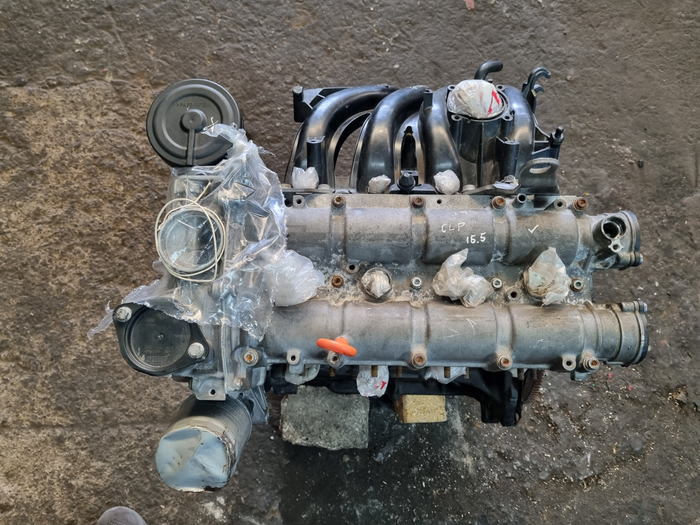How a Clp Engine Can Boost Efficiency in Various Industries
The introduction of CLP engines marks a substantial shift in functional effectiveness throughout different sectors, driven by their ability to maximize fuel consumption and minimize downtime. Industries such as manufacturing and logistics stand to obtain substantially from their robust layout and regular power result, which assure to enhance operations and enhance productivity. As organizations increasingly focus on sustainability together with efficiency, the role of CLP engines comes to be much more vital. What continues to be to be seen is just how these improvements will certainly shape the future landscape of commercial procedures and their influence on more comprehensive economic trends (clp engine).
Overview of CLP Engines
CLP engines, or Constant Fluid Propellant engines, stand for a significant development in propulsion technology, particularly for room applications. These engines use a continuous feed system that enables the continual expulsion of propellant, resulting in boosted efficiency and performance contrasted to traditional solid or hybrid propulsion systems. By preserving a continuous circulation of liquid propellant, CLP engines can achieve extra specific thrust control, which is vital for steering spacecraft in numerous goal scenarios.
The design of CLP engines integrates innovative products and cutting-edge fuel monitoring systems. clp engine. This leads to minimized weight and boosted dependability, necessary variables for long-duration area objectives. The continuous operation minimizes the risk of combustion instability, a common difficulty in traditional rocket engines.

Advantages in Manufacturing
The manufacturing of Constant Fluid Propellant (CLP) engines offers a number of notable advantages that boost both effectiveness and cost-effectiveness. Among the key advantages is the structured production procedure, which lowers the intricacy connected with typical propulsion systems. By making use of liquid propellant, suppliers can attain better accuracy in engine efficiency, bring about optimized energy output and decreased waste.
In addition, CLP engines help with a greater degree of modularity, permitting simpler assimilation into various production lines. This versatility can considerably lower lead times and enhance total operational adaptability. The use of CLP innovation also tends to lessen the need for extensive maintenance because of fewer moving components, which equates into minimized downtime and operational prices.

Applications in Logistics
Leveraging Constant Liquid Propellant (CLP) engines in logistics provides significant advantages in functional performance and reliability. These engines provide a durable service for various transportation demands, enabling the seamless motion of items across vast ranges. The inherent style of CLP engines allows for consistent power outcome, which equates right into smoother and more predictable transportation routines.
One of the key applications of CLP engines in logistics is in durable freight transportation, where they can drive both ground and aerial vehicles. Their capability to preserve high performance under varying load conditions ensures that delivery timelines are fulfilled, consequently other improving consumer satisfaction. Additionally, CLP engines can be incorporated into automated logistics systems, helping with real-time tracking and maximizing course planning.
Furthermore, the longevity of CLP engines decreases maintenance downtime, permitting logistics firms to maximize their functional capacities. This is especially valuable in warehousing procedures, where performance in taking care of and transporting products is important. As logistics remains to progress, the assimilation of CLP engines stands for a forward-thinking approach that not only enhances performance yet also supports the sector's expanding demands for integrity and speed.
Influence On Power Effectiveness
How do Constant Fluid Propellant (CLP) engines enhance power performance in transport? CLP engines make use of a regular flow of fluid gas, optimizing combustion processes and keeping a secure thrust output. This design lessens energy losses associated with typical combustion engines, where gas distribution can vary and cause inefficiencies.
The constant procedure of CLP engines permits for a more effective thermal cycle, leading to greater particular impulse contrasted to standard engines. clp engine. This converts to reduced fuel usage for the very same quantity of job done, considerably decreasing functional prices throughout various transportation industries, including air travel and maritime markets
In addition, the capacity of CLP engines to maintain optimal performance under varying load conditions reduces the need for regular acceleration and deceleration, even more improving fuel efficiency. Improved power efficiency not just adds to set you back financial savings yet additionally brings about decrease greenhouse gas exhausts, lining up with worldwide sustainability goals.
Future Trends and Innovations
Emerging improvements in Constant Liquid Propellant (CLP) engine technology promise to revolutionize the landscape of transport performance and sustainability. As sectors pivot toward greener alternatives, CLP engines stand at the forefront, click here for info incorporating cutting-edge products and style methodologies that enhance efficiency while lessening environmental impact.
Among one of the most appealing trends is the adoption of crossbreed systems that integrate CLP engines with renewable resource sources. This synergy can maximize fuel intake and lower discharges, lining up with worldwide sustainability goals. Additionally, innovations in computational liquid characteristics (CFD) are assisting in the design of even more aerodynamically effective engines, leading to lowered drag and boosted gas effectiveness.
Moreover, the development of wise monitoring systems is readied to enhance functional efficiencies. These systems take advantage of data analytics and IoT innovation to maximize engine performance in real-time, making certain that the engines operate within their most reliable parameters.
As research study remains to explore different propellant formulations-- such as biofuels and synthetic gas-- the future of visit this page CLP engines looks promising. By taking advantage of these innovations, markets can not just improve their effectiveness yet also contribute substantially to a cleaner, more sustainable future in transport.
Verdict
In verdict, CLP engines represent a substantial improvement in effectiveness across several markets. The integration of advanced products and fewer relocating parts minimizes maintenance requirements, while placement with sustainability goals positions CLP engines as a critical technology for the future.